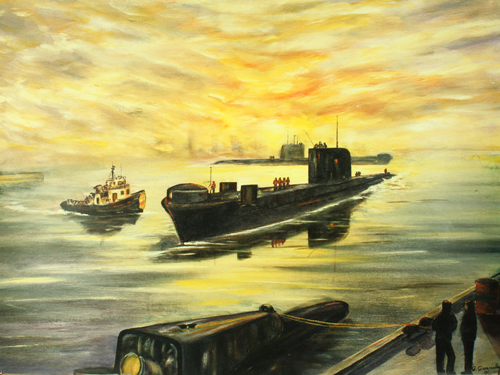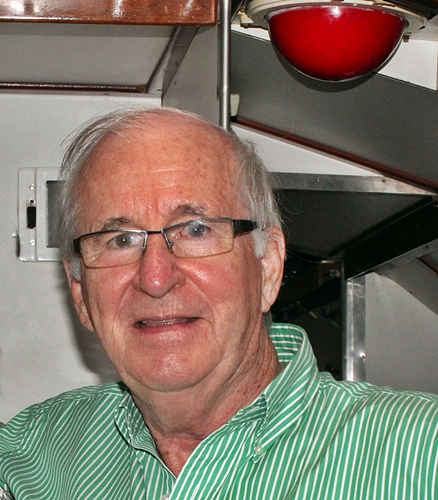| HMCS Ojibwa, under the command of Lloyd Barnes (beside ladder),was chosen to participate in Royal Navy trials with a commercial submersible to determine whether it was a viable option to their own tried and trusted method of up you go and don't forget to exhale all the way up. The back up, where time permitted, involved a SEIE (Submarine Emergency Immersion Equipment) aka, the orange suit. Over the two days (August 9-10) ten transfers were made taking submariners from the after hatch to the fore hatch and bringing another group from the fore hatch back to the after hatch. |
Other Claims to Fame
| In addition to Paul's 12 years of service aboard Ojibwa as well as a stint on Onondaga, he went on to serve in the Naval Dockyard. Paul is a talented artist as well as a musician and according to his good friend Gilles Poirier with whom he served on HMCS Onondaga, he has 'more funny stories than Mr. Carter has liver pills'. | Paul Connolly visiting Ojibwa in 2015. |




 RSS Feed
RSS Feed